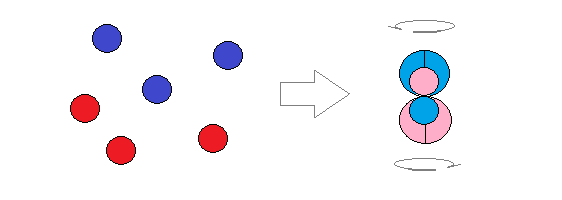Mass is a central concept in physics. Yet, when people go looking for it by…

The Aether as a Standing Wave
An aether of zero-point particles will have the overall behavior of a very high frequency standing wave. This is because the photons and neutrinos that make up the aether will constantly bump into each other. Since these particles have similar momentum, they will bounce back and forth.
Vibrating grid
Unlike high energy photons and neutrinos, zero-point particles interact strongly with each other. Undisturbed, they will form a grid with photons evenly spaced out. The smaller and more numerous neutrinos fill the gaps between them. The overall pattern is that of a vibrating grid, with photons locked into position.
Constantly moving at the speed of light, everything vibrates furiously.

Electron bobbing around in an aether of zero-point photons and neutrinos
Ratio of photons to neutrinos
We can estimate the ratio of zero-point photons to neutrinos by assuming that each photon is made up of at total of six charged particle quanta, and that each neutrino constitutes a single neutral energy quantum.
If we further assume that each quantum is randomly made up of two strings, and that these strings come as either woolly or abrasive in equal measures, we get one neutrino for each charged particle quantum. We get in other words six neutrinos for each photon.
However, many photons have condensed into ordinary matter, so we can assume that the ratio of neutrinos to zero-point photons is higher than six.

3 negative + 3 positive particle quanta = 1 photon
Explaining the double slit experiment
Since all photons in our model are dielectric, we get that zero-point photons will both repel and attract each other. The neutrinos between the photons will therefore act in much the same way that neutrinos act in the vicinity of charged matter. There will be tiny high and low pressure areas constantly fluctuating in harmony with the overall vibration.
The result will be a resilient and self-repairing standing wave. Exactly as required to explain the double slit experiment in terms of standing waves.



Comments (0)